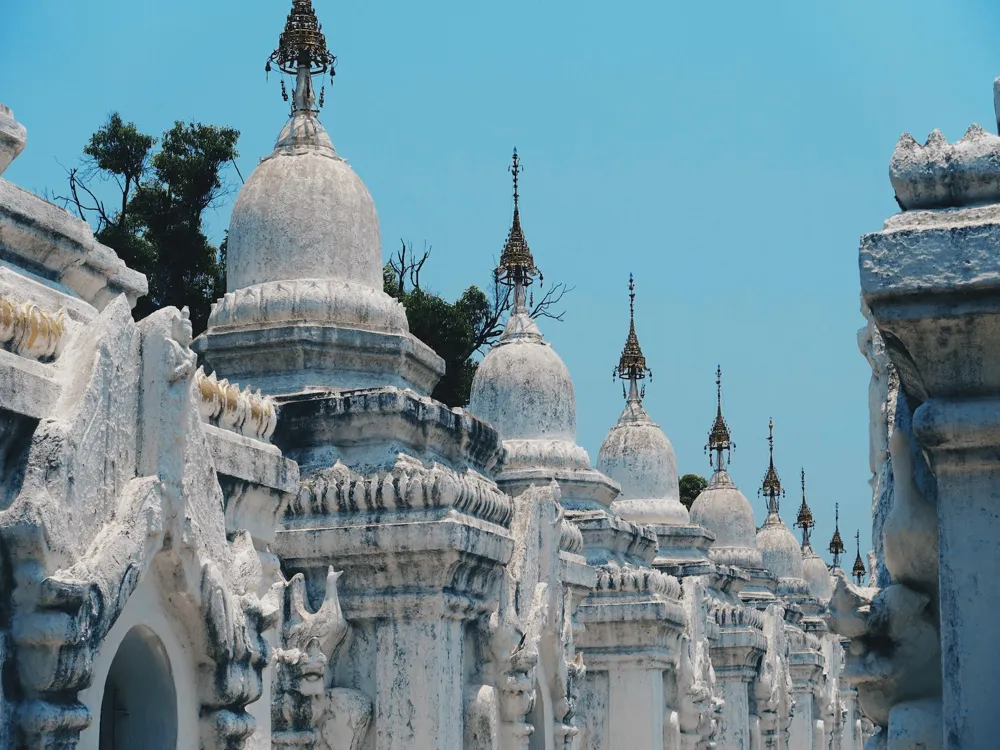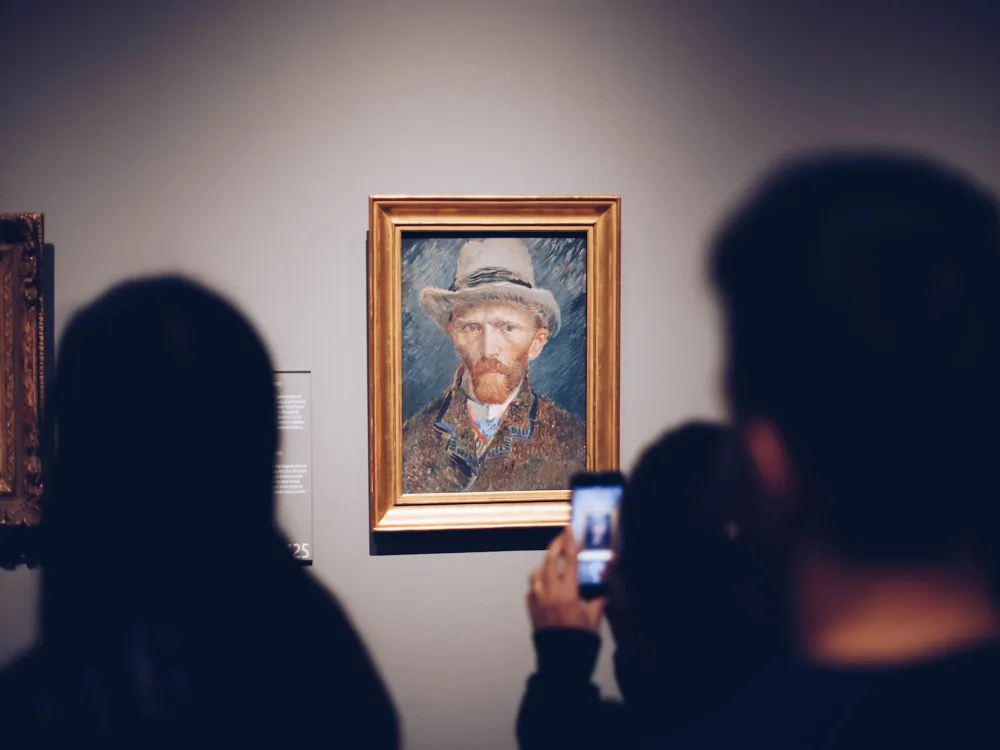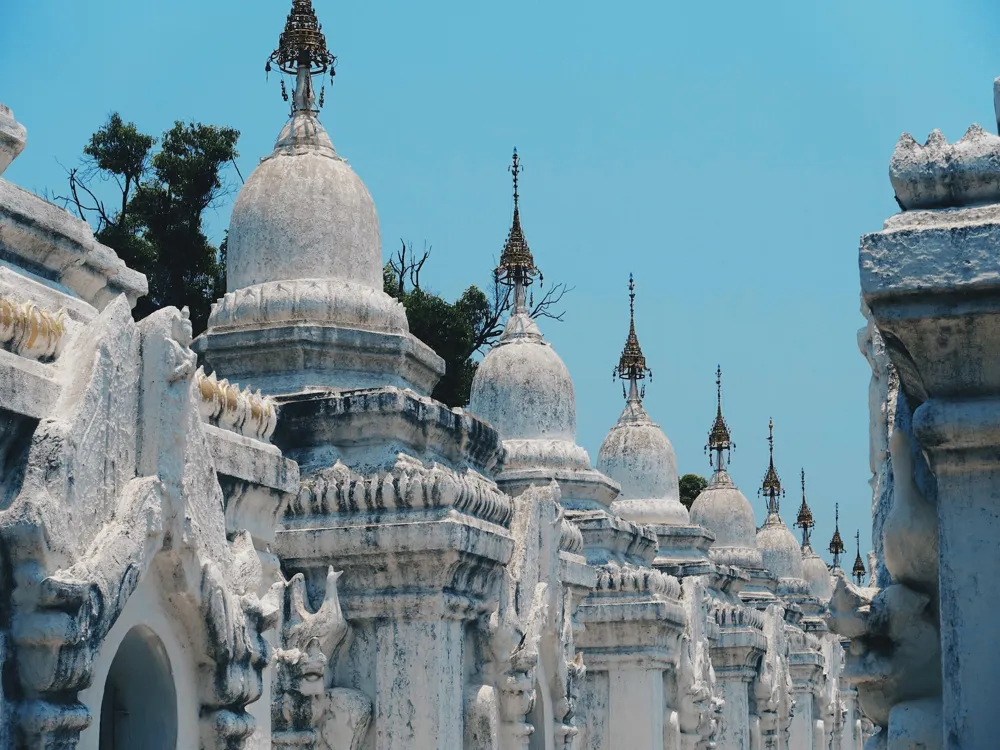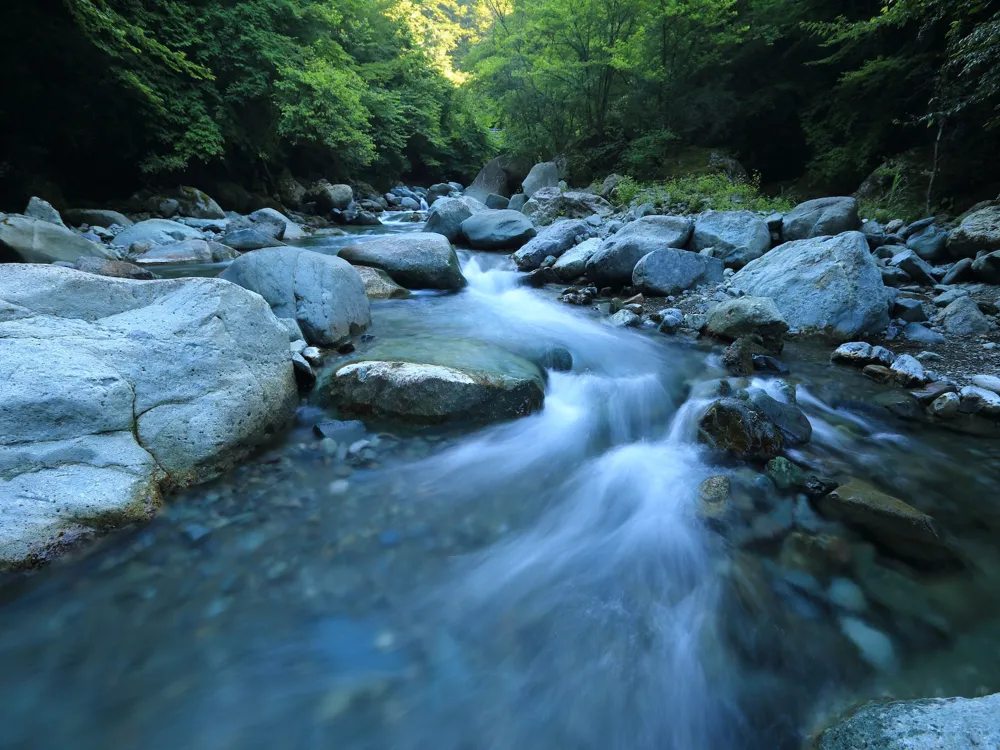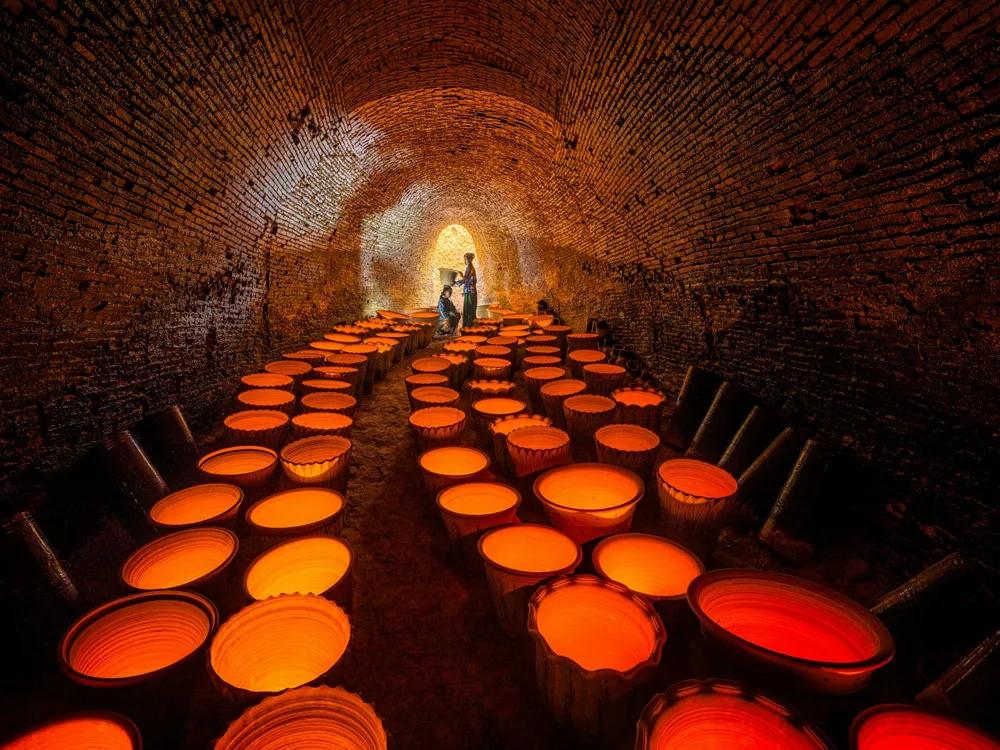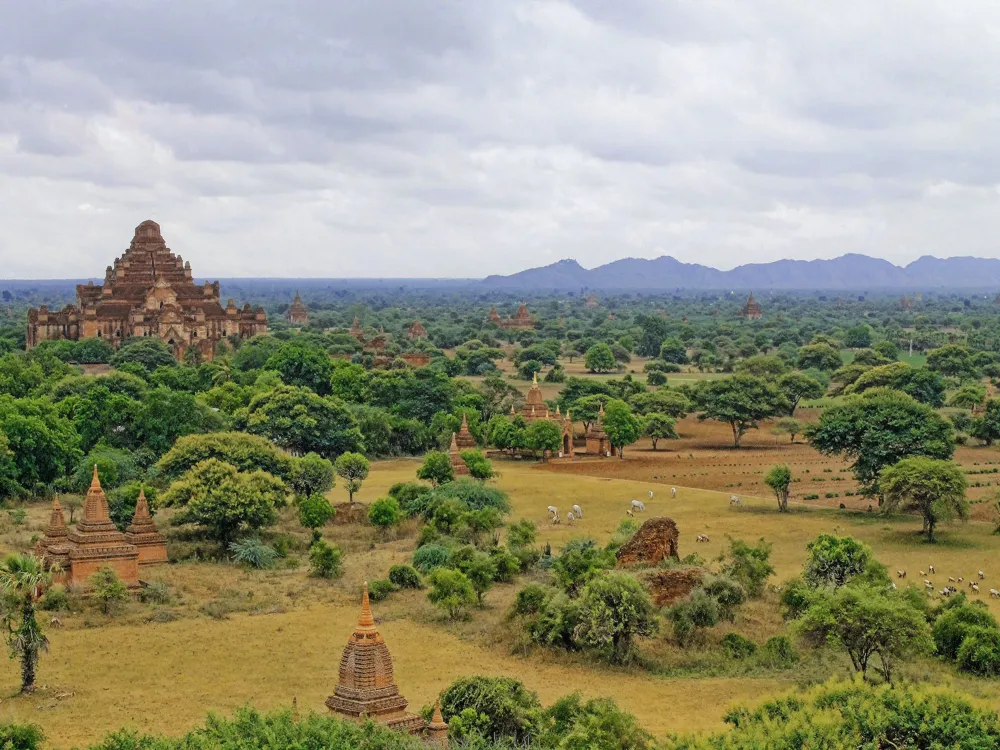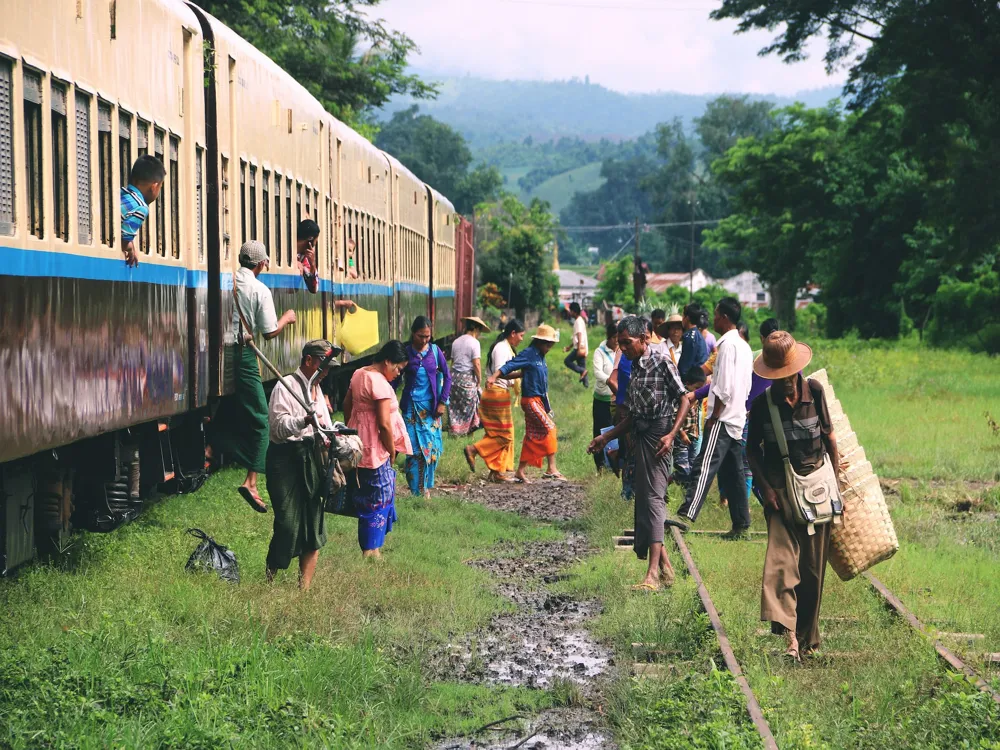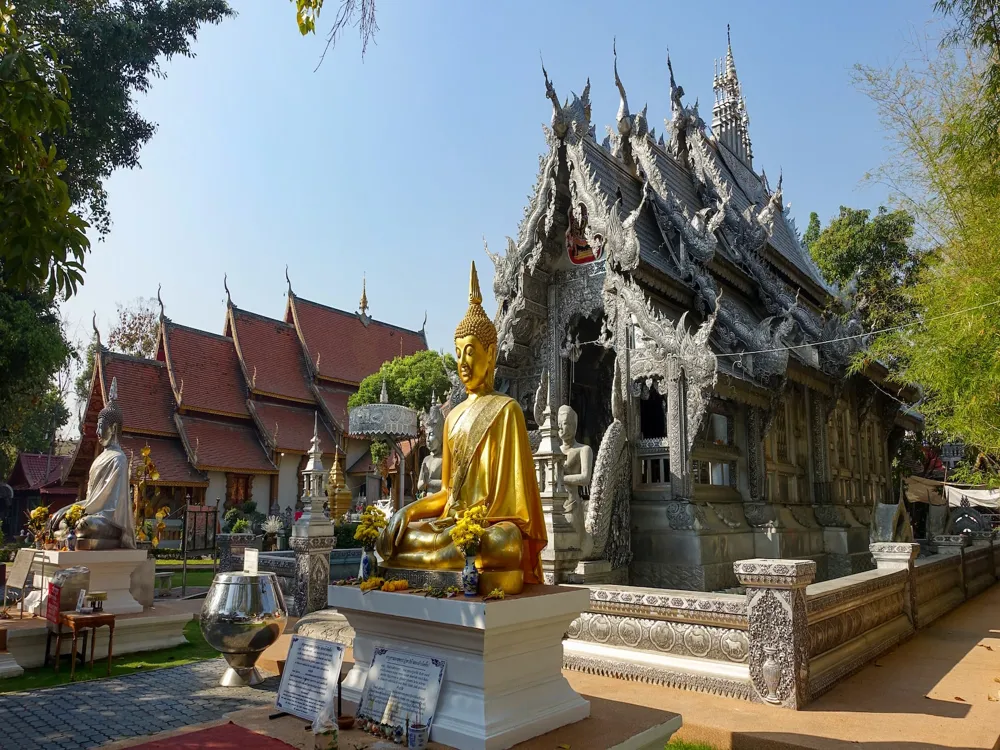The Sandamuni Pagoda, a spectacular example of Burmese temple architecture, stands proudly in Mandalay, Myanmar. This pagoda is not only a significant religious site but also a testament to the rich cultural heritage of Myanmar. It was constructed in the late 19th century under the orders of King Mindon, who intended to create a center for Buddhist learning and meditation. The pagoda is renowned for its large iron Buddha image, known as the Sandamuni, which weighs over 18,000 kilograms and is one of the largest iron Buddha images in Myanmar. The Sandamuni Pagoda's compound is a vast expanse, adorned with numerous white stupas that create an ethereal and tranquil ambiance. These stupas house hundreds of stone slabs inscribed with Buddhist teachings, making the pagoda an enormous repository of Buddhist texts and scriptures. The architecture of the pagoda is characterized by its traditional Burmese style, featuring intricate carvings, golden spires, and a unique layout that reflects the cosmology and religious beliefs of Buddhism. The central stupa, gilded and embellished with precious stones, rises majestically against the backdrop of Mandalay's skyline, serving as a beacon of spirituality and history. Visitors to the Sandamuni Pagoda are often struck by the serene and contemplative atmosphere that pervades the complex. The sound of monks chanting, the sight of devotees offering prayers, and the overall spiritual ambiance provide a profound experience of peace and introspection. The pagoda also plays a vital role in the local community, serving as a venue for religious ceremonies, festivals, and educational activities, thereby reinforcing its status as a central pillar of Mandalay's cultural and religious life. The architectural brilliance of the Sandamuni Pagoda is a captivating aspect that draws countless visitors each year. At the heart of its design is the fusion of traditional Burmese architectural elements with religious symbolism. The central structure of the pagoda is the majestic stupa, which is surrounded by a multitude of smaller white stupas. This cluster of stupas creates a visually stunning landscape, symbolizing the celestial realm in Buddhist cosmology. The central stupa, crowned with a hti (umbrella-like structure), is an exemplary representation of Burmese craftsmanship. The base of the stupa is square-shaped, following traditional Buddhist architectural norms, and each side of the square has entrances leading to the central shrine. The stupa is adorned with intricate carvings, floral motifs, and statues of mythical creatures, which are significant in Buddhist mythology. The use of gold and precious stones in decorating the stupa adds to its grandeur and spiritual significance. Surrounding the central stupa are rows of white stupas, each containing a marble slab inscribed with Buddhist scriptures. These slabs are arranged in neat rows, creating a library-like environment in the open air. The architectural layout not only serves a religious purpose but also demonstrates the importance of knowledge and learning in Buddhism. The alignment of these stupas, along with the meticulously landscaped gardens, contributes to the harmonious and balanced appearance of the pagoda complex. Visitors should wear modest clothing that covers the shoulders and knees. It's important to show respect to the religious nature of the site. It's crucial to remove shoes before entering the pagoda premises, as it is a sign of respect in Burmese culture. While photography is allowed, it should be done respectfully, without disturbing worshippers or monks. Avoid using flash inside the halls. The pagoda is a place of worship and meditation. Visitors should maintain a quiet demeanor and avoid loud conversations. Consider hiring a local guide to gain deeper insight into the pagoda's history and architecture. The Sandamuni Pagoda is easily accessible from various parts of Mandalay. Visitors can choose from several modes of transportation: The pagoda's central location in Mandalay makes it a focal point for visitors, easily incorporated into a day's itinerary of exploring the city's rich cultural and historical landmarks. Read moreOverview of Sandamuni Pagoda
Architecture of Sandamuni Pagoda
Tips for Visiting Sandamuni Pagoda
Dress Appropriately
Be Mindful of Cultural Norms
Photography Etiquette
Respect the Quiet
Guided Tours
How to Reach Sandamuni Pagoda
Mandalay Tourism
Best Time to Visit Mandalay
How to Reach Mandalay
Things To Do Mandalay
Sandamuni Pagoda
Mandalay
NaN onwards
View mandalay Packages
Weather :
Tags : Buddhist Temple
Opening hours : 9:00 AM - 5:00 PM
Ticket details : MMK 15,000 for foreign tourists for the Mandalay Archaeological Zone ticket.
Planning a Trip? Ask Your Question
Mandalay Travel Packages
View All Packages For Mandalay
Top Hotel Collections for Mandalay

Private Pool

Luxury Hotels

5-Star Hotels

Pet Friendly
Top Hotels Near Mandalay
Other Top Ranking Places In Mandalay
View All Places To Visit In mandalay
View mandalay Packages
Weather :
Tags : Buddhist Temple
Opening hours : 9:00 AM - 5:00 PM
Ticket details : MMK 15,000 for foreign tourists for the Mandalay Archaeological Zone ticket.
Planning a Trip? Ask Your Question
Mandalay Travel Packages
View All Packages For Mandalay
Top Hotel Collections for Mandalay

Private Pool

Luxury Hotels

5-Star Hotels

Pet Friendly







